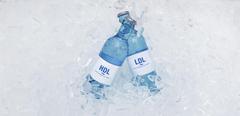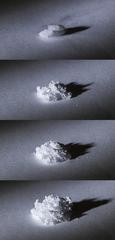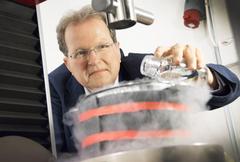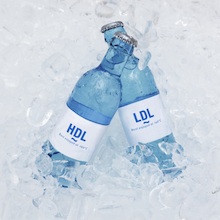URL: https://www.desy.de/news/news_search/index_eng.html
Breadcrumb Navigation
DESY News: X-ray experiments reveal two different types of water
News
News from the DESY research centre
X-ray experiments reveal two different types of water
Liquid water exists in two different forms – at least at very low temperatures. This is the conclusion drawn from X-ray experiments carried out at DESY and at the Argonne National Laboratory in the US. An international team of researchers headed by the University of Stockholm now reports its findings in the Proceedings of the National Academy of Sciences (PNAS).

Liquid water has two variants: High Density Liquid (HDL) and Low Density Liquid (LDL) which have now been observed at extremely low temperatures, but can not be bottled. Photo: Gesine Born, DESY
“Amorphous ice exists in two varieties: one with a high and one with a low density,” explains Felix Lehmkühler, a physicist from DESY who was a member of the research team. These two varieties are referred to as high-density amorphous ice (HDA) and low-density amorphous ice (LDA). “HDA ice is some 25 percent denser than LDA ice,” Lehmkühler adds. “Scientists have been wondering for some time whether these two varieties of ice might be associated with corresponding varieties of liquid water. However, that is very difficult to measure. Even if water does exist in two states, they will constantly be mixing with and turning into each other, and there is no way of separating the two.”

When HDA ice changes to LDA ice upon warming, it suddenly grows in volume by about a quarter, as has been observed before. Photos: Katrin Amann-Winkel/Filippo Cavalca, University of Stockholm
The scientists then observed the dynamics of this phase change at the P10 beamline of DESY’s X-ray source PETRA III. They found that the transition takes place via a liquid state: first, the HDA ice turns into a liquid form of high density, then this high-density liquid (HDL) turns into a lower density form (low-density liquid, LDL). This demonstrates the existence of the two suspected varieties of liquid water – at least at very low temperatures. The extremely low-temperature water is so viscous that the two liquid phases are only transformed into each other and only mix very slowly, allowing this process to be measured.
“The new remarkable property is that we find that water can exist as two different liquids at low temperatures where ice crystallisation is slow,” says Nilsson, a professor of Chemical Physics at the University of Stockholm. “It is very exciting to be able to use X-rays to determine the relative positions between the molecules at different times,” adds Fivos Perakis of the University of Stockholm, who was one of the two principal authors of the study, along with Amann-Winkel. “We have in particular been able to follow the transformation of the sample at low temperatures between the two phases and demonstrated that there is diffusion as is typical for liquids.”
The discovery of the two varieties of water is an important step towards understanding this extraordinary liquid. “Water may seem very simple, but it behaves very strangely compared with other liquids,” explains Lehmkühler, a member of the DESY research group for Coherent X-ray Scattering, headed by Gerhard Grübel, who is also a co-author of the study and who works for DESY as a Leading Scientist.

Research leader Prof. Anders Nilsson from the University of Stockholm. Photo: University of Stockholm
The scientists are hoping that future experiments will help them to answer questions such as whether the two types of liquid water also exist at room temperature. In principle, there is no reason why they should only occur at low temperatures. “The new results give very strong support to a picture where water at room temperature can’t decide in which of the two forms it should be, high or low density, which results in local fluctuations between the two,” says co-author Lars G.M. Pettersson, professor in Theoretical Chemical Physics at the University of Stockholm. “In a nutshell: Water is not a complicated liquid, but two simple liquids with a complicated relationship.”
The University of Innsbruck, the KTH Royal Institute of Technology in Stockholm and the US research centre SLAC were also involved in the research.
Reference:
Diffusive dynamics during the high-to-low density transition in amorphous ice; Fivos Perakis, Katrin Amann-Winkel, Felix Lehmkühler, Michael Sprung, Daniel Mariedahl, Jonas A. Sellberg, Harshad Pathak, Alexander Späh, Filippo Cavalca, Daniel Schlesinger, Alessandro Ricci, Avni Jain, Bernhard Massani, Flora Aubree, Chris J. Benmore, Thomas Loerting, Gerhard Grübel, Lars G. M. Pettersson and Anders Nilsson; Proceedings of the National Academy of Sciences, 2017; DOI: 10.1073/pnas.1705303114




